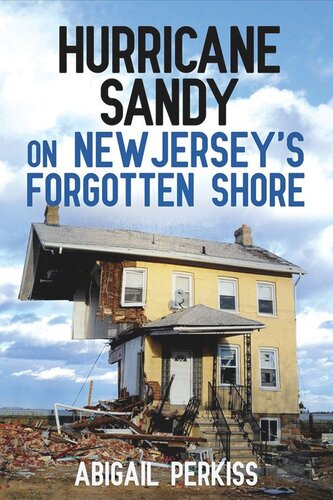

Most ebook files are in PDF format, so you can easily read them using various software such as Foxit Reader or directly on the Google Chrome browser.
Some ebook files are released by publishers in other formats such as .awz, .mobi, .epub, .fb2, etc. You may need to install specific software to read these formats on mobile/PC, such as Calibre.
Please read the tutorial at this link: https://ebookbell.com/faq
We offer FREE conversion to the popular formats you request; however, this may take some time. Therefore, right after payment, please email us, and we will try to provide the service as quickly as possible.
For some exceptional file formats or broken links (if any), please refrain from opening any disputes. Instead, email us first, and we will try to assist within a maximum of 6 hours.
EbookBell Team

5.0
50 reviewsHurricane Sandy on New Jersey's Forgotten Shore brings to life the individual and collective voices of a community: victims, volunteers, and state and federal agencies that came together to rebuild the Bayshore after the Superstorm Sandy in 2013.
After the tumultuous night of October 29, 2012, the residents of Monmouth, Ocean, and Atlantic Counties faced an enormous and pressing question: What to do? The stories captured in this book encompass their answer to that question: the clean-up efforts, the work with governmental and non-governmental aid agencies, and the fraught choices concerning rebuilding. Through a rich and varied set of oral histories that provide perspective on disaster planning, response, and recovery in New Jersey, Abigail Perkiss captures the experience of these individuals caught in between short-term preparedness initiatives that municipal and state governments undertook and the long-term planning decisions that created the conditions for catastrophic property damage.
Through these stories, Hurricane Sandy on New Jersey's Forgotten Shore lays bare the ways that climate change and sea level rise are creating critical vulnerabilities in the most densely populated areas in the nation, illuminating the human toll of disaster and the human capacity for resilience.